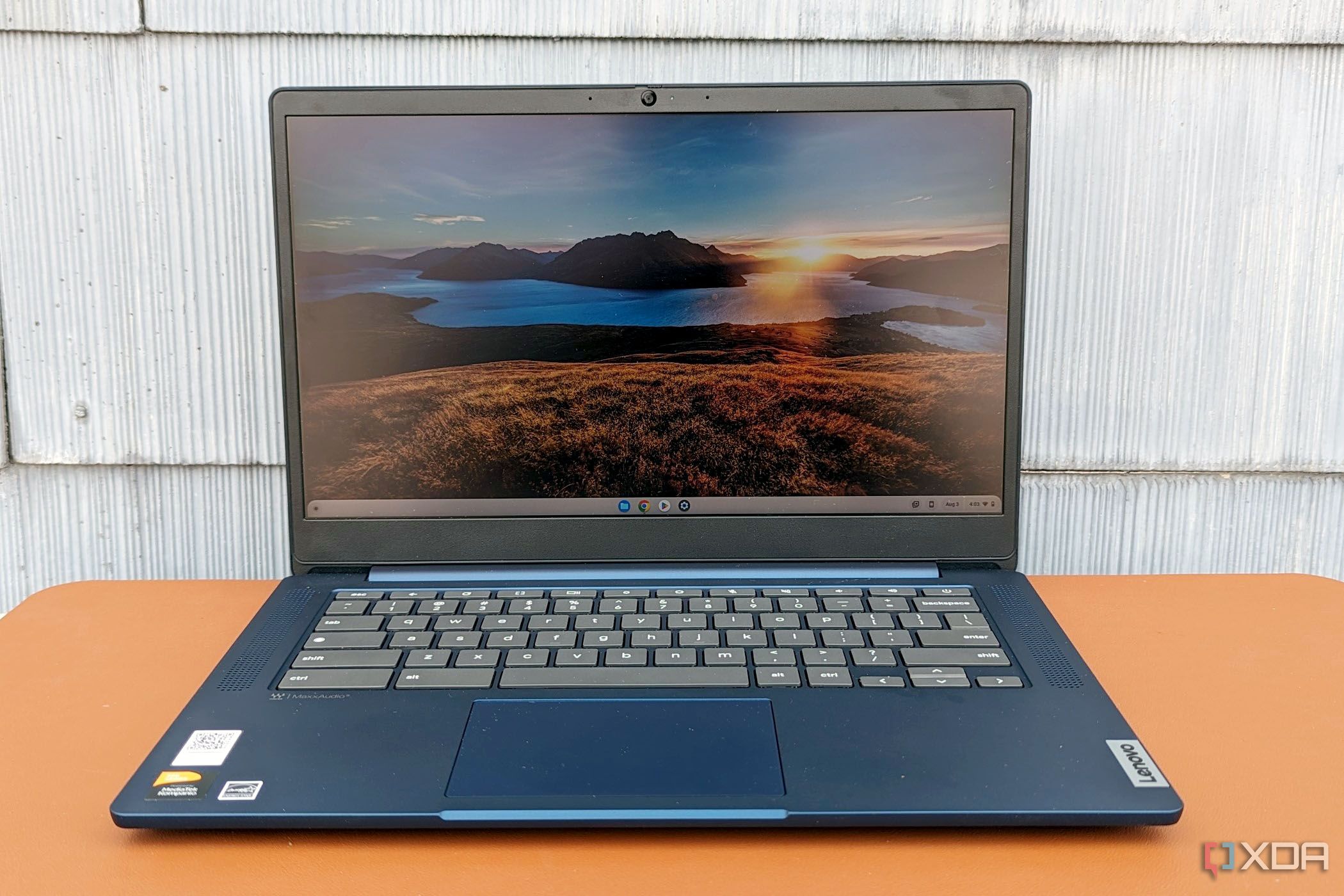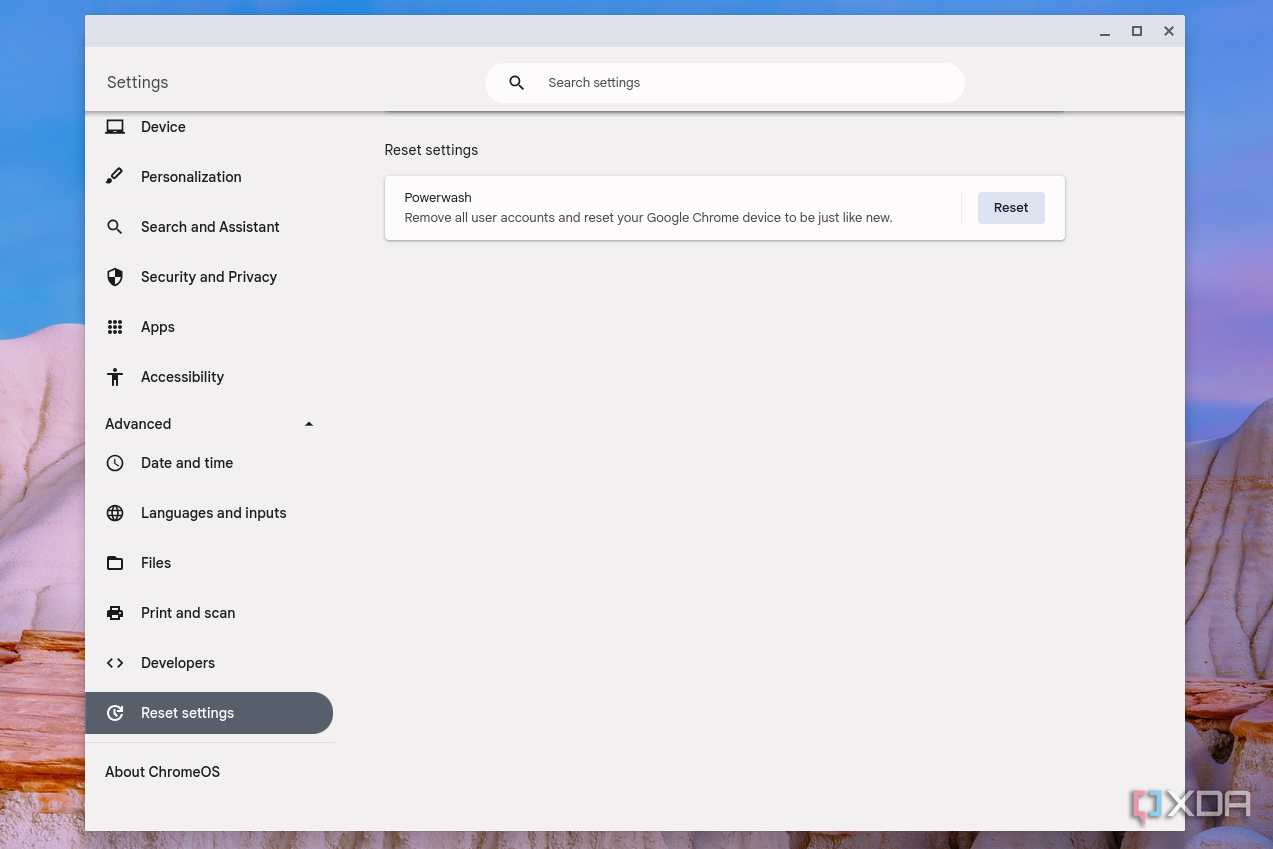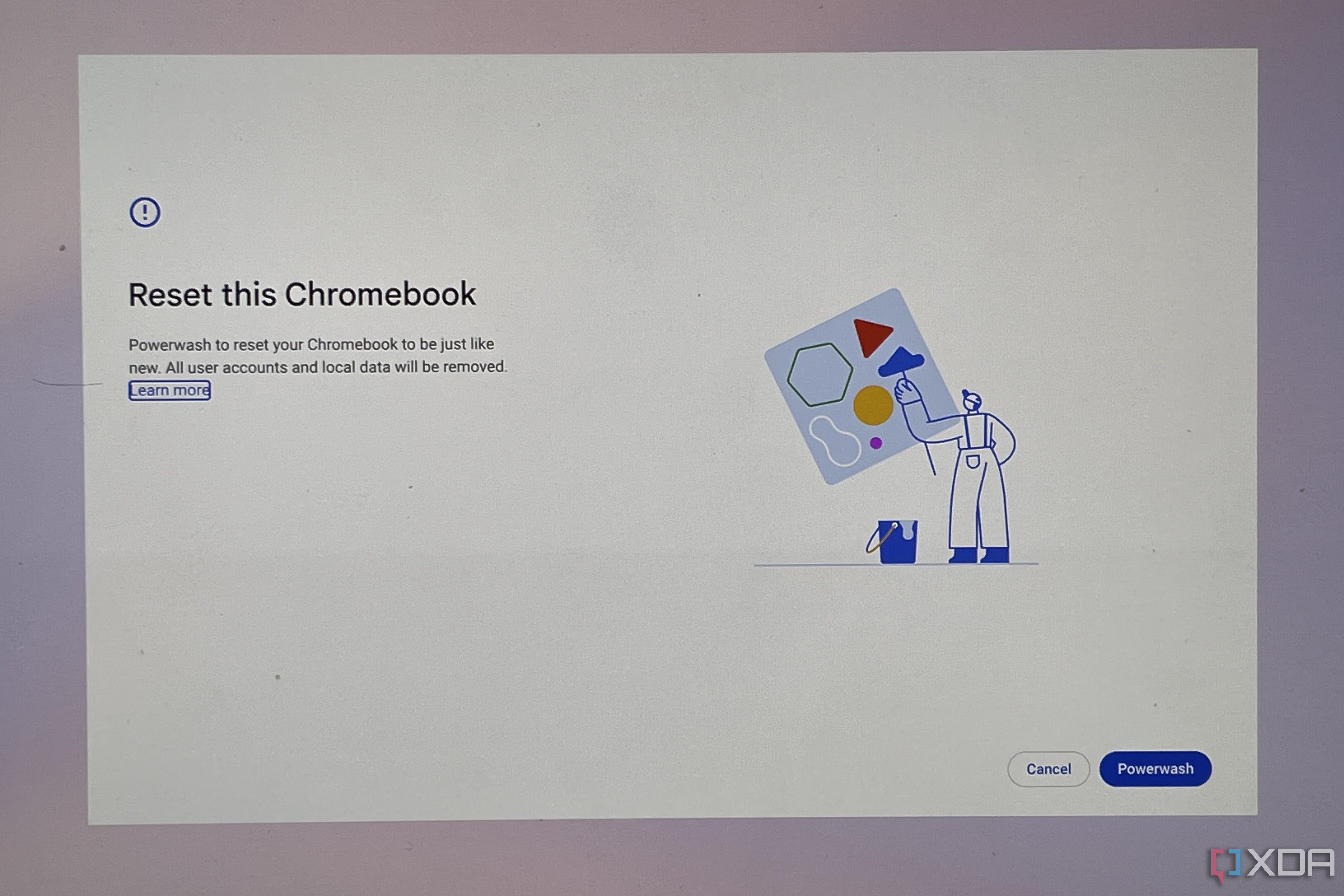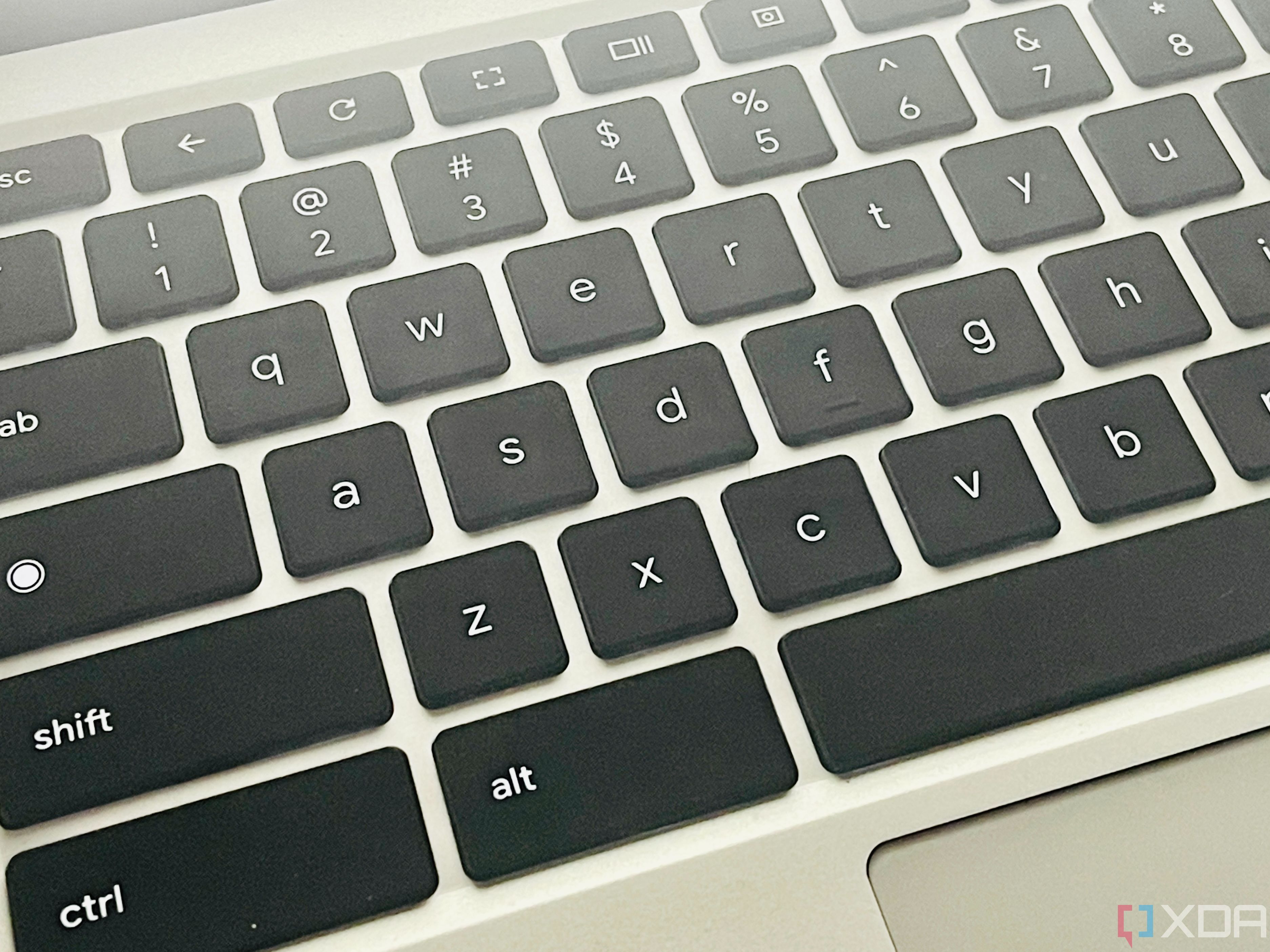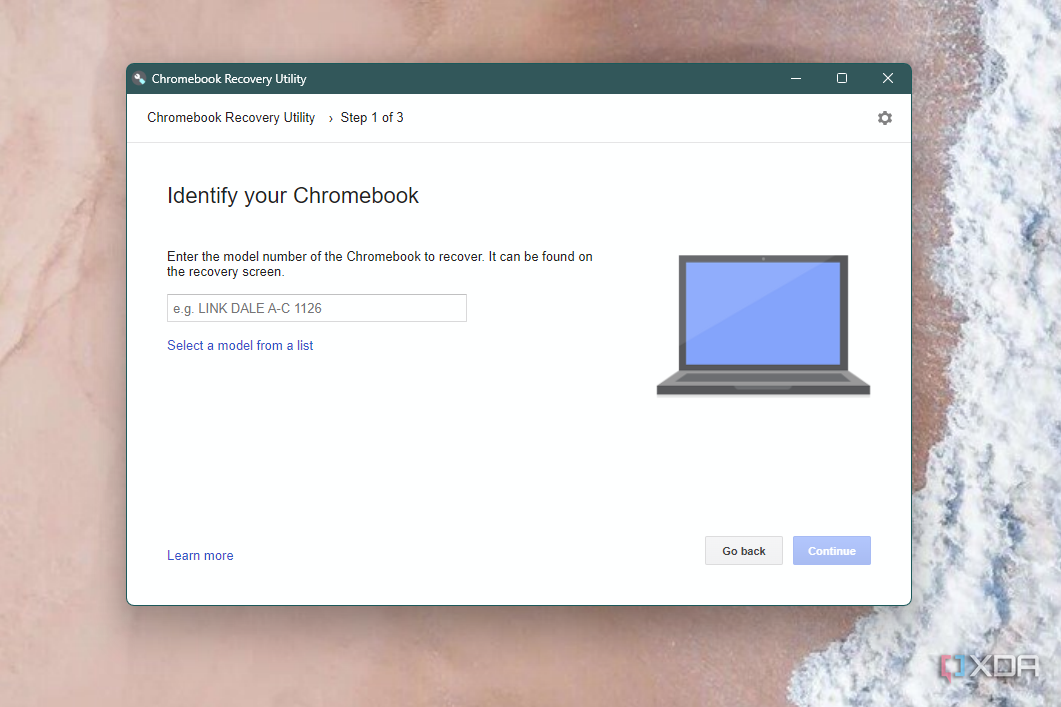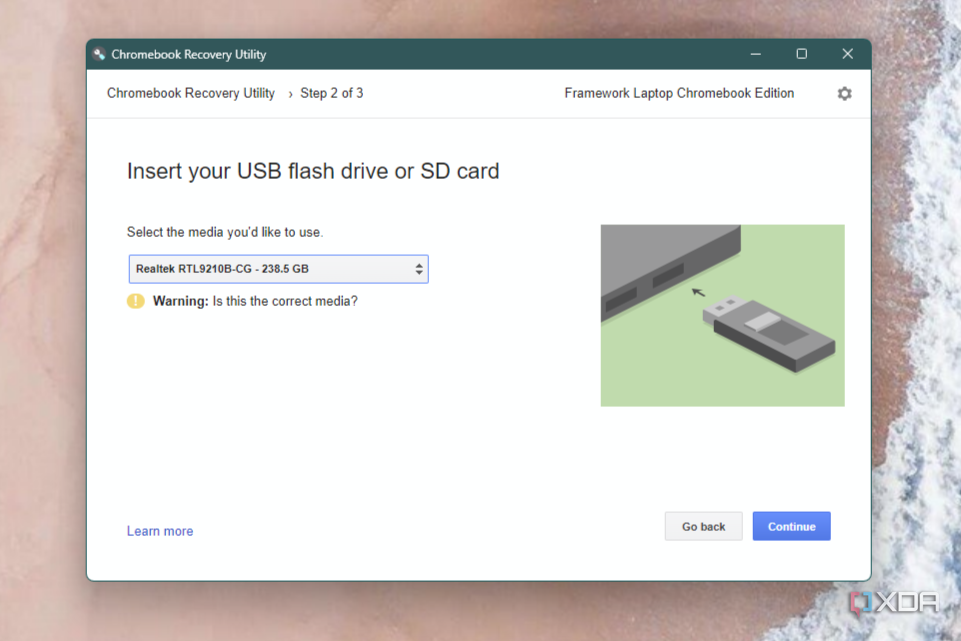Google's ChromeOS is an intuitive, simple interface to navigate. Of course, even the best operating systems have the occasional bug or issue that pops up. If you've recently encountered bugs on your Chromebook, you might be concerned. Luckily, most errors and bugs are easy to troubleshoot. In this article, we'll discuss how to reset your Chromebook to prepare it for selling, or to fix software issues.
On a Chromebook, this process of resetting is known as a "Powerwash." There are multiple ways you can do this, through the Chromebook Settings app, from the login screen, and if worst comes to worst, from a USB drive. You also can simply perform what's known as a "refresh" without deleting your files, should ChromeOS feel slow, or should you come across bugs.
How to reset a Chromebook through the settings app
For most people, the easiest way to reset a Chromebook will be to Powerwash it through the settings app. It will bring your Chromebook back to the state it was when it was out of the box. Of course, you'll need your Chromebook to be functioning, and you'll need admin privileges so you can do this. If it isn't, you'll have to try some of the other methods below. But for now, here's how you can factory reset a Chromebook to trade it in, sell it off, or just throw it away, all from the settings app.
- Open the ChromeOS settings app by clicking on the clock and then the settings gear.
- Choose Advanced from the menu on the left.
-
Choose Reset settings.
- Confirm that you want to reset your Chromebook by clicking Reset.
- Choose Restart.
After a few seconds, your Chromebook will reset itself back to the out-of-box experience. If you're going to give it to someone else, they can now set it up as their own with their Google Account just like you did when you first purchased it.
How to reset a Chromebook from the lock screen
Forgot the password to your Chromebook or Google Account and are having issues logging in? Well, you can actually reset your device without even getting access to ChromeOS itself. This can be done by triggering a keyboard shortcut for a Powerwash on the login or lock screen. You'll need to press a combination of buttons to do this.
- Press the Ctrl, Shift, Alt, and R keys together at the same time on your keyboard.
-
You'll see a prompt reminding you that you're about to Powerwash and reset this Chromebook.
- Choose Powerwash.
Once your Chromebook reboots, follow the steps on your screen. It should take just a few seconds, to a few minutes, but once complete, you'll be prompted to log in with a Google Account once more, and your Chromebook will be just like new again.
How to reset a Chromebook without deleting most of your files
Having issues with ChromeOS but just want to reset a Chromebook without deleting your files? This is what a hard reset is for. This is the least extreme of the methods, as it won't delete your apps, but might delete some of your files in your downloads folder. It requires another keyboard shortcut.
- Turn off your Chromebook
-
Press and hold the Refresh button on your keyboard and press the Power button.
- Once your Chromebook reboots, you can simply release the Refresh key.
In the case of a ChromeOS tablet, you won't need a keyboard shortcut. All that's needed is to press and hold Power and Volume Up for 10 seconds, and then release both.
How to reset a Chromebook with a USB drive
If a simple reboot or Powerwash doesn't work, you may need to reinstall ChromeOS entirely. This option should be attempted only if all the other suggestions don't work. Reinstalling ChromeOS requires access to another Chromebook, Mac, or Windows PC. You'll also need a spare USB flash drive or SD card with around 8GB of free space on it.
- Using the Google Chrome browser on another computer, download and install the Chromebook Recovery Utility extension.
-
Launch the program. You're asked to provide the Chromebook model number, which you can enter manually or choose from a list.
-
You may be asked to grant permission to make changes to your USB flash drive or SD card. Simply click Yes or Continue.
- Plug the USB flash drive or SD card into the Chromebook, then follow the on-screen prompts to download ChromeOS to your external drive or card.
- Once the download is complete, remove the USB flash drive or SD card.
- With the Chromebook powered on, hold Esc and Refresh on the keyboard, then press the Power button to reboot in recovery mode.
- At the ChromeOS is missing or damaged screen, insert the SD card or USB drive containing ChromeOS. You should then go through the operating system's installation process.
Hopefully, you feel a bit better now about resetting your Chromebook for any purpose. Most of the time, issues are easily repaired via a quick reboot or Powerwash. Make sure that before you attempt any options, you back up all of your personal data to prevent loss, even if you plan to sell the device after resetting. If you have any additional questions about fixing any issues with your Chromebook, check out our ChromeOS settings guide. If you're looking to take your Chromebook game to the next level, check out our guide on Android apps for ChromeOS.

